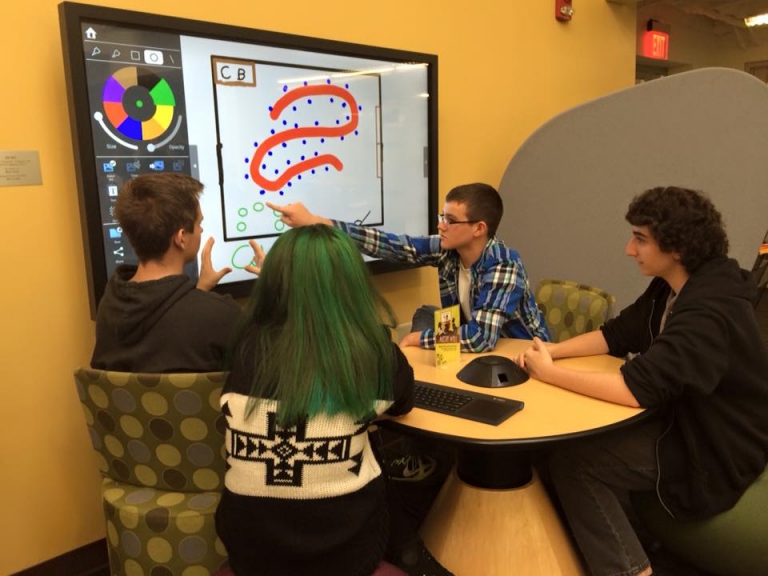Visual Communication
Communicating visually involves much more than including pictures in your paper or PowerPoint. The font you use, the spacing of your text, and the medium you select (paper, poster or foam board, a website) all contribute to the way your audience sees your composition.
While you may not have full control of the way every composition may look (for example, your teacher may require MLA formatting), you will find some projects that allow, or require, the use of visual communication. Here are some things to consider as you incorporate visual communication into your composition:
- Pick the best medium for your project, and consider the audience. Sometimes our first choice is not the best. For example, if you are considering an oral presentation to pitch a new airplane club to beginning pilots you may first think of designing a PowerPoint to go along with a 10 minute speech. But if you intend to pitch the idea in an airplane hangar to individuals you may want to compose a short speech and a corresponding brochure that contains contact information. However, some projects, like a research poster, pick the medium for you.
- Develop a metaphor to help you come up with design ideas. Once you've selected a medium that suits your audience's needs and expectations, brainstorm for metaphors: pictures, available designs, objects, animals or places that work well with your topic. For example, the visual components of a research poster on a rare newt might be based on a photograph of moss covered rock near a stream.
- Use the metaphor as a guide to choosing colors, shapes, and fonts for your visual project. For example, in our moss covered rock image we find dark brown from the stones and light green from the moss as well as white from the rushing stream. (It's important to pick a dark and light color to help with contrast.) The round stones inspire us to think about circles and smooth edges, so consider that as you design your composition. (If you only have one color use a color scheme website like this one to help you pick other matching colors.)
- Choose fonts that support your metaphor and overall argument. For example, if the newt is on the verge of extinction, you might want to choose a font that looks delicate like Palatino or a condensed font like Bodoni or Gill Sans. Think of fonts as actual objects. Are the fonts wide and their stems thick? They look sturdy and hard to push over and therefore strong and steady. Are the fonts tall and slim and their stems thin? They look like they could fall over and therefore delicate or elegant.
- Layout your visual composition by considering the eye movement of your audience member. What would you like the audience to see first, second, and third? Use the size, placement on the page, or color to help your audience make sense of the design. For example, put the first image in the top left or make it much bigger than the other items. If the first item is a line of text, make that text bigger or a brighter color, so it stands out. Put the least important information on the bottom right of the design or make it smaller.
- Consider contrast, repetition, alignment, and proximity to help your audience make quick sense of the information you provide. This website is a good example of these principles in action. We see contrast with the dark words on the light background. The dark words are a good contrast with the light background, and this helps you read the text easier. Repetition can be found in the use of numbers in this discussion. Imagine if the design constantly switched from numbers to bullets. You might think each section completely changed topics. When it comes to visual communication, alignment helps you see all the information belongs together. Notice how the alignment of the text changed as this discussion went from paragraphs to numbers. We associate things that are closer together as being related and proximity helps us communicate that. Likewise, things that are further apart seem to be unrelated.

